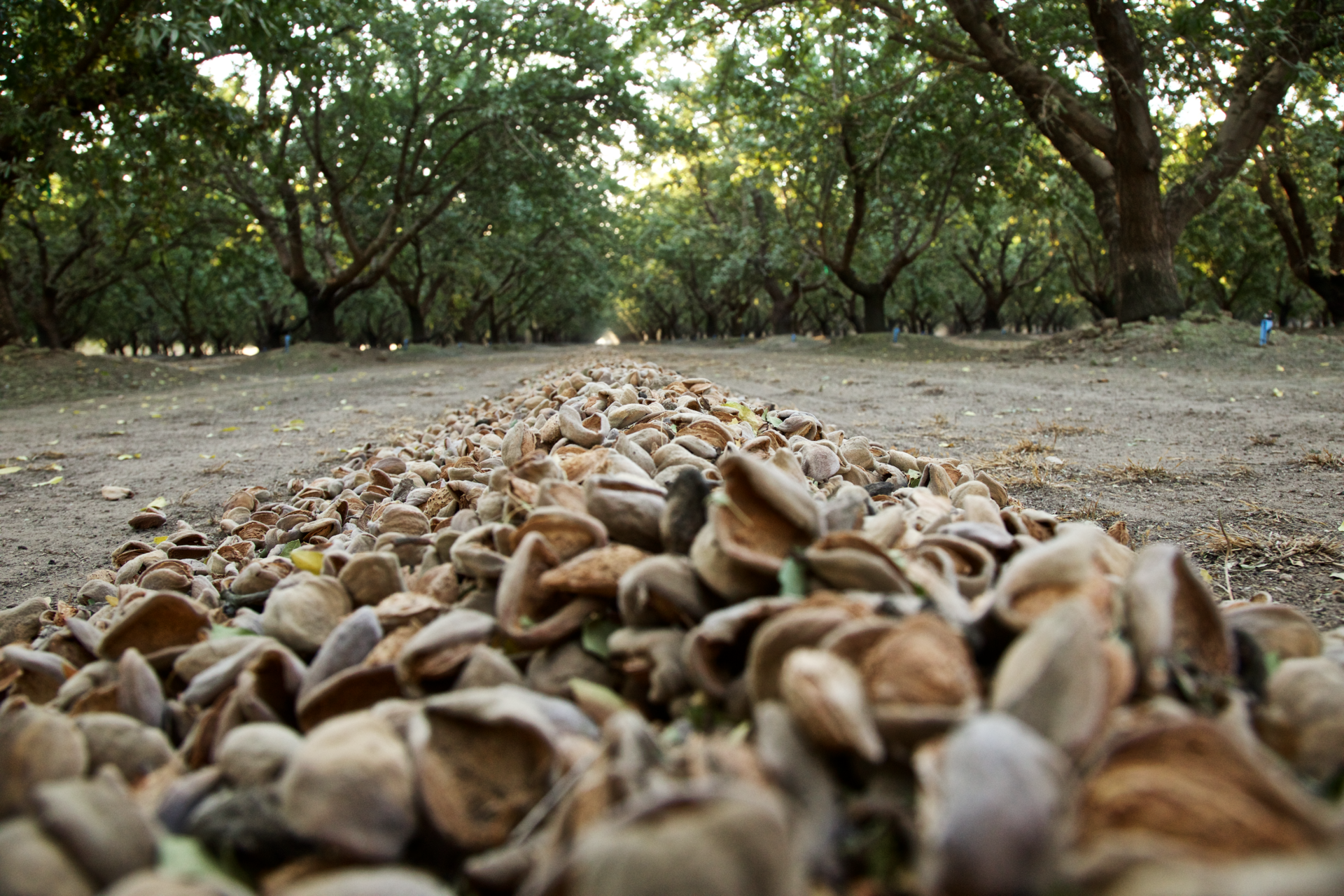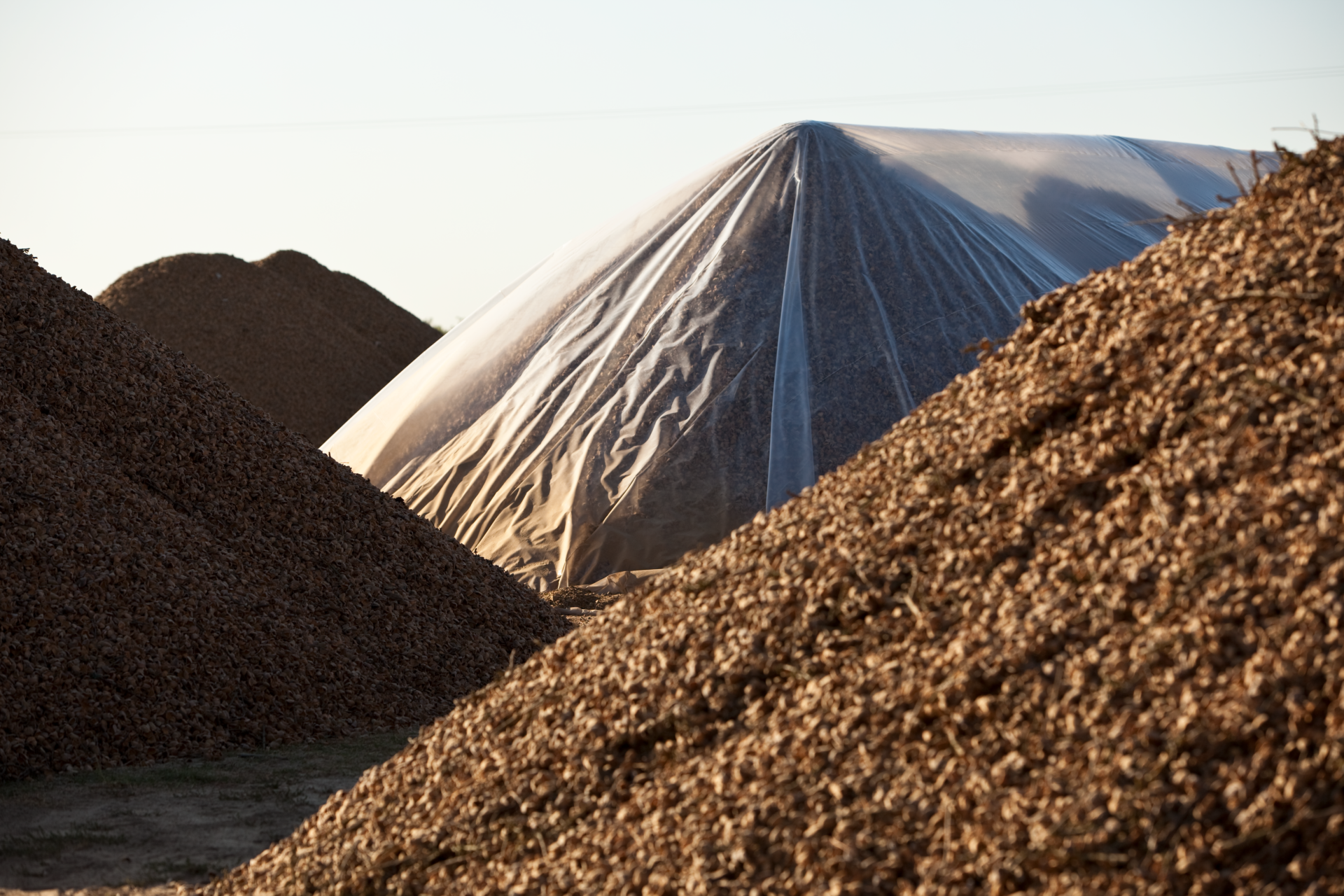
Dave Phippen has been growing and processing almonds for decades in the Central Valley, an experience that has given him a front-row seat to many of the challenges confronting the industry.
And while water shortages, increasing regulations around pesticide use and other vexing issues often grab the headlines, one recurring problem, which is almost entirely within a grower’s control, is moisture management come harvest time.
Delivering almond kernels with a moisture content greater than 6% to a huller/sheller or processor can create a cascading series of difficulties that affect not only the “wet” nuts but also the nuts around those with high moisture content in stockpiles or even in loads shipped overseas.
“Unfortunately, many times growers know that their product has high moisture content and are just looking for a way to quickly get it out of the field so that they can move on to address other orchard management practices,” said Phippen, a partner at grower and processor Travaille and Phippen, based in Manteca. “They tell me, ‘Just put it in a stockpile. We know the almonds are not dry enough for good hulling/shelling.’ But as we dive deeper into just how moist the nuts are, it becomes evident that they are well beyond the critical 6% moisture threshold. At that point, the blame or loss exposure is transferred from the grower to the huller/sheller.”
Almonds that are too wet when delivered to processors have a higher risk of developing aflatoxins created by Aspergillus spp., the fungal molds that produce aflatoxins. As with most molds, the most significant factor in the growth of Aspergillus is moisture content.
Aflatoxin is one of the primary reasons shipments of almonds are rejected after testing is conducted at ports overseas.
Nuts whose moisture content is too high also have a higher incidence of concealed damage, a condition in which off-flavors and off-colors are revealed after roasting. Concealed damage can significantly impact quality and reduce grower returns, especially in years with late harvests and/or early rains.
Wetter nuts also are more susceptible to having cracked shells embedded in the kernel during hulling/shelling process.
Brad Craven, who retired two years ago after a long career in the processing industry, said California’s ever-expanding almond production may be inadvertently contributing to the problem of wetter nuts.
“In my last few years, I saw an increasing trend in growers delivering wetter nuts,” he said. “With increasing almond volume throughout the state, there may not be enough harvesting capacity to get through that crop before a rain comes. Growers are starting to harvest as early as they can to get things done.”
Importance of Moisture Sampling
The first step to effectively managing Aspergillus growth and concealed damage is to ensure moisture content of the almonds does not exceed allowable levels. The Almond Board of California (ABC), based on findings from research in this area, created the Stockpile Management Best Practices, which not only detail the allowable levels but also educate growers and the broader industry on how to prevent aflatoxin and minimize the formation of concealed damage.
To accurately determine moisture levels in almonds, it is important to take a good sample of nuts before sweeping.
“Most hullers have a moisture check machine available for grower samples,” Phippen said. “Growers should make sure their sample is representative of the whole orchard, or, even better, representative of the wettest area in the orchard.”
Phippen recommended sampling early in the day to capture the morning dew that may occur. Research also has shown that nuts on the north side of the canopy next to the tree trunk can have moisture readings as much as 2 percentage points higher than in other areas of the orchard.
Growers should recognize that there is variability when drying on the orchard floor versus drying in windrows. Sampling should take this variability into account; within the windrow, moisture tends to accumulate on the bottom layers of almonds, so samples should be taken from that bottom layer.

Understanding Moisture Levels
Once an accurate sample has been taken, growers should determine the overall moisture level of their crop. Before stockpiling, moisture content for almonds should be below 6% for in-shell kernel, or less than 9% for total fruit (in-hull almonds), or less than 12% moisture content for hulls.
As a practical guideline, nuts should not be stockpiled if either their hull moisture content exceeds 12% or their kernel moisture content exceeds 6%.
“A savvy huller/sheller requires a sample before placing the product into a stockpile,” Phippen said. “Once the damp almonds are picked up from the field and placed into a field hopper, the problem gets big. That’s why it’s important for all parties involved to know, as close as possible, the product’s true and actual moisture content prior to picking it up out of the field.”
Phippen also offered this advice to growers worried about moisture levels in nuts.
“If you know that you are on the risky side and picking up anyhow, wait until later in the day after the morning moisture has had a chance to burn off before beginning pick-up operations,” he said. “Even if the operations need to continue into the early evening to complete the field, that is preferable to picking up first thing in the morning.”
Growers who shake nuts from trees too early also run the risk of higher moisture levels in windrows. Shaking early also leaves more nuts on trees. Conditioning to remove debris prior to windrowing will speed up the drying process and deliver cleaner product to the huller/sheller. Growers are encouraged to assess their operation and determine if using a conditioner may work for them.
Managing Stockpiles
When considering where to place stockpiles, it is recommended that industry members choose an area where the bottom of the pile is raised or sloped. This encourages any moisture to drain away from the stockpile, further limiting mold growth.
The positioning and shape of stockpiles also contributes to moisture control and helps reduce mold growth. An even, flat top is best for stockpiles to minimize areas where condensation can build up on the underside of the tarp, further limiting the opportunity for moisture.
Finally, stockpiles are best oriented with the long side on a north-south axis. In cases where the stockpiles are oriented with a long east-west axis, condensation and mold growth typically are worse on the north end of the pile.
Tips for Using Tarps
While tarps are a necessary part of the stockpile equation, they can increase humidity levels among the stockpiled nuts, heightening the chances of mold growth or concealed damage. Hullers and shellers are advised to keep these factors in mind when selecting a tarp to use:
A white-on-black tarp best minimizes temperature fluctuations, which lead to condensation and eventual mold growth.
Clear tarps allow the greatest temperature fluctuations, but can be used on dry, in-hull almonds that are well below the moisture threshold.
White tarps fall between white-on-black and clear tarps in terms of temperature fluctuations.
Controlling the relative humidity (rH) in a stockpile is also critical to maintain food safety; rH greater than 65% within a stockpile is the maximum allowed for almond storage. In situations when moisture levels become too high in a stockpile, hullers/shellers should open up the tarps in the daytime to allow moisture to escape and then close them at night. They should also monitor the outside of the piles where large changes in temperature and condensation can increase moisture levels.
For more information on how to manage stockpiles, from tips on what kind of tarp to use and monitoring for pests to controlling the rH, hullers and shellers should reference pages 5 and 6 of ABC’s Stockpile Management Best Practices for Hullers/Shellers (almonds.com/sites/default/files/grower_stockpile_management_best_practices_from_abc_2014%5B1%5D.pdf).
Don’t Pass the Buck to Processors
Delivering wet nuts to the processor is a headache for everyone, said Phippen, as it requires added cost, time and stress to manage wet nuts that may have been fine if they had a few more days in the field.
“If the product was in a pile that experienced excess moisture for an extended time, concealed damage is always a possibility. And, if for some reason the product slipped past inspection, it could become moldy and fail inspection at the point of sale,” said Phippen. “What’s more, aflatoxin contamination is also likely with wet or damp product, and high aflatoxin levels render product unsalable or in need of costly further processing. And when aflatoxin rejections do occur at the ports, this has the potential to damage the reputation of our whole industry.”
For Craven, the solution is simple.
“Growers have to deliver dry product,” he said. “It has got to dry in the fields. If you don’t dry it in the field, a lot of hullers won’t be able to handle those nuts. It’s important to provide the best product to ensure the greatest, most efficient outputs across the industry.”










